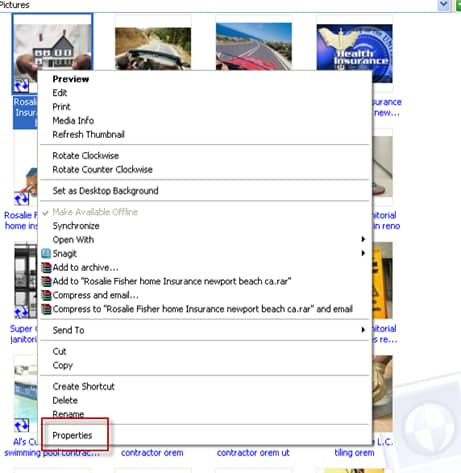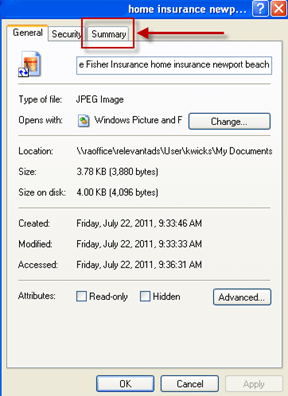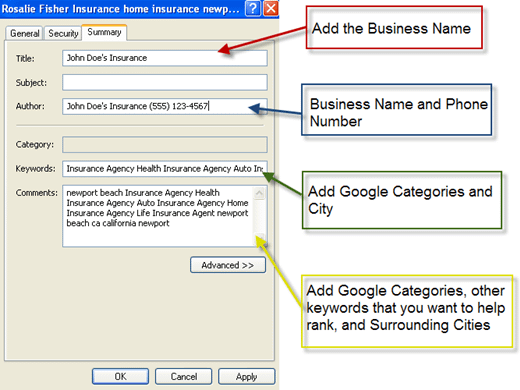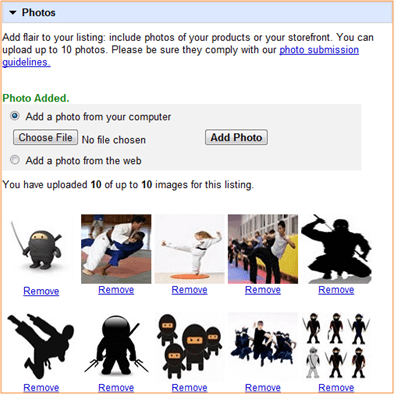It’s no secret that adding photos to your Google Place page can help with your ranking; however, there are techniques for optimizing photos that will help make your Google Places page rank even higher.
Local Splash has found that by adding the business name, phone number, city, state and a few keywords to the photos, our clients rank much higher than those with normal photos that haven’t been altered. Our company has performed numerous tests with coding the photos before we upload to our clients Google Places pages and the results have been astoundingly positive. So how do you optimize your photos for Google Places? Follow these steps and watch your ranking climb.
1. Save the photo to your desktop under your business name and a keyword (example: John Doe’s Auto Insurance Agency Newport Beach CA).
2. Open the properties of the image. To do this, right click on the image, then choose “Properties.” See screenshot below.
3. Select the “Summary” tab at the top of the “Properties” box. Here you will be able to add keywords to the image that will be picked up by search engines. See screenshot for an example.
4. After you enter the data, press “OK” to apply and save the content.
5. Add the photos to your Google Places page by signing into your Google Business account, editing your businesses and adding photos (see photo for example). After adding the photos to your Google Places page, it will take some time to see your ranking increase. Remember, increasing your page rank is no overnight process; it takes time and requires patience.
How will this help your search engine ranking?
The more information you provide to the search engines, the more opportunities you’re giving the search engine to learn about your business. Providing more information makes it easier for the search engines to understand your business and what you do. It is by understanding your business that search engines gain confidence in your company, and confidence equates to higher rankings.






 Video search engine optimization (SEO) is becoming increasingly popular and if you have a business and haven’t taken advantage of this tool, there’s no time like the present. Did you know that 2 billion videos are watched on YouTube every day? The popular network has the power to give your business massive exposure and if your video happens to go viral, your company could become the next overnight sensation. Video SEO can help increase the visibility of your video, making it more likely to be seen by your target audience. Not sure if making a video for your business is worth it? Read these top advantages and you’ll be yelling “action!” in no time.
Video search engine optimization (SEO) is becoming increasingly popular and if you have a business and haven’t taken advantage of this tool, there’s no time like the present. Did you know that 2 billion videos are watched on YouTube every day? The popular network has the power to give your business massive exposure and if your video happens to go viral, your company could become the next overnight sensation. Video SEO can help increase the visibility of your video, making it more likely to be seen by your target audience. Not sure if making a video for your business is worth it? Read these top advantages and you’ll be yelling “action!” in no time.